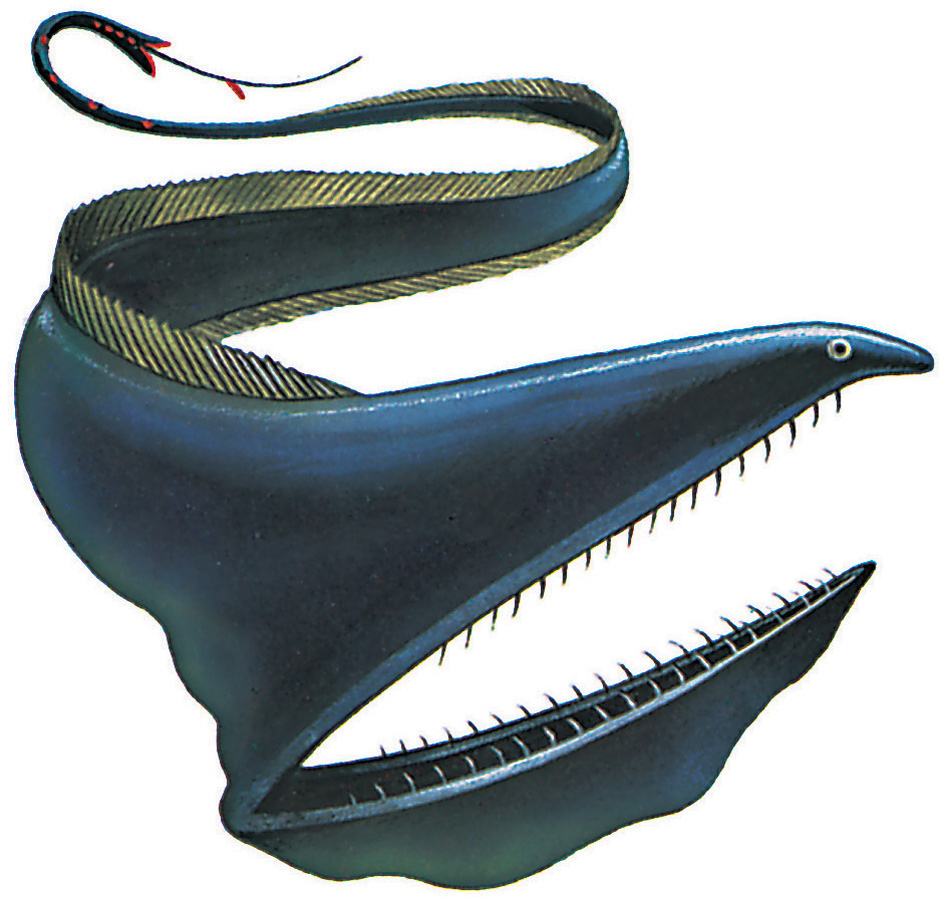Gulper eel is a deep-sea fish with a large mouth and long, thin body. Unlike most fish, gulper eels lack scales and a pelvic fin—that is, a fin on the underside of the body. Gulper eels are weak swimmers. They somewhat resemble eels. However, gulper eels are not true eels.

There are dozens of species (kinds) of gulper eels. Scientists know relatively little about most species because the fish live deep in the ocean.
One species is called the pelican eel or simply the gulper eel. It is also called the umbrella mouth gulper eel because of its large mouth. This species has a long, thin body and a whiplike tail. Its skin is black. An adult may reach 3 feet (1 meter) in length. However, most of them are about half this size.
The pelican eel lives in temperate (seasonal) and tropical oceans around the world. Adults are most often found at depths ranging from 3,300 to 10,000 feet (1,000 to 3,000 meters). No sunlight reaches these depths. The pelican eel’s eyes are small, and its eyesight is poor. The fish relies on its senses of smell and touch, picking up scents and vibrations in the water.
The pelican eel may use its mouth like a net, capturing many small animals at once. Its stomach can also stretch to hold large amounts of food. This ability may help the pelican eel to survive in the deep sea, where opportunities to feed may be seldom. Despite its large mouth, the pelican eel has extremely small teeth. It eats small shrimp, squid, and other invertebrates (animals without backbones). It also eats various fish.
The pelican eel has a special organ on the tip of its tail. This organ produces reddish light through chemical processes, an ability called bioluminescence. The fish may use this light as a lure to attract prey. It may wait in ambush and gobble up prey that come near. Or the pelican eel may swim slowly with its giant mouth open, filtering the water for prey.
Another species of gulper eel is often called simply the gulper eel. It lives in the northern Atlantic Ocean. It resembles the pelican eel. But it has a smaller mouth, larger teeth, and a longer tail.
